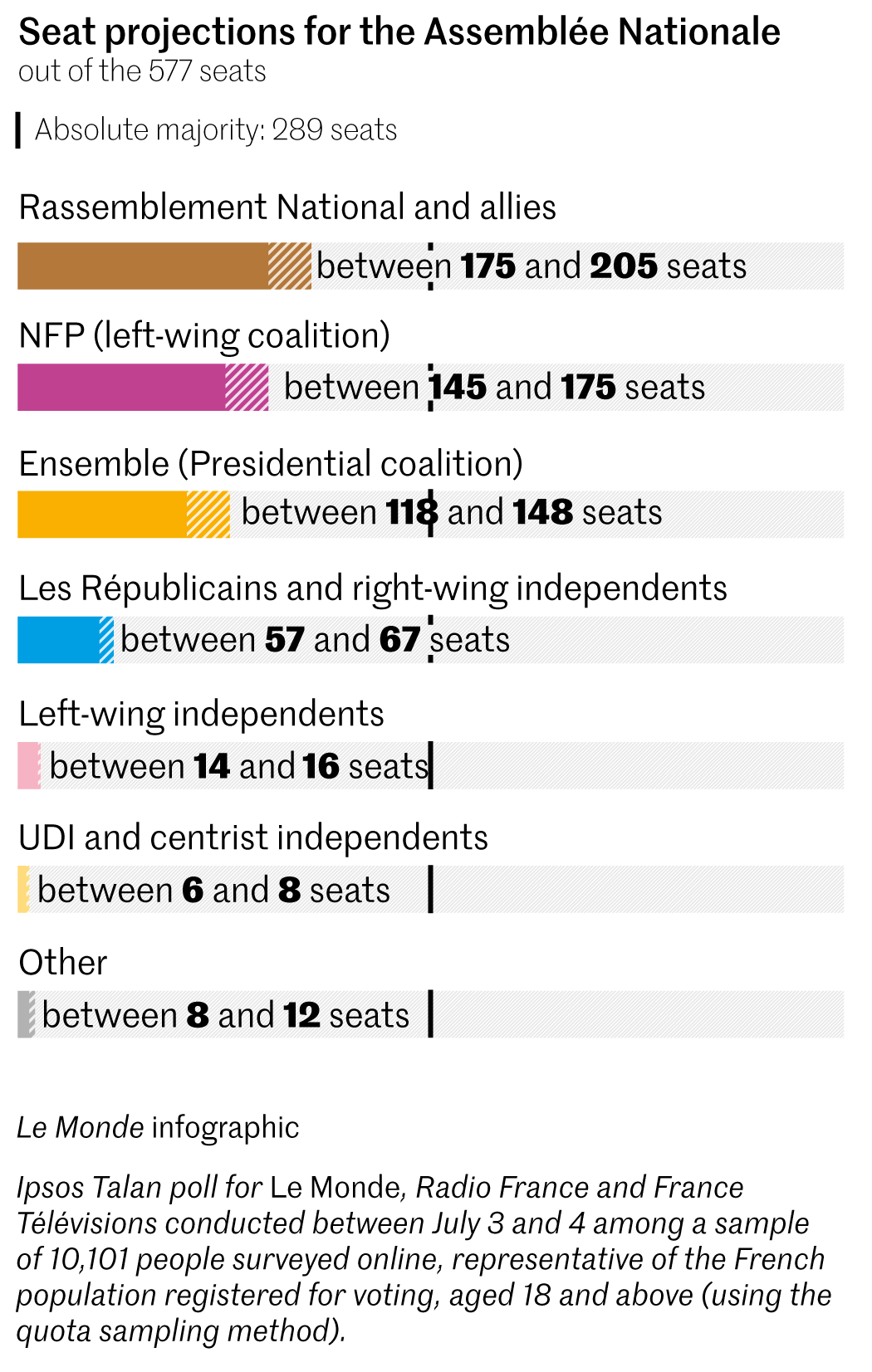

The far-right Rassemblement National (RN) could obtain the largest group in the French Assemblée Nationale, with 175 to 205 seats, including its new allies who joined from the conservative Les Républicains (LR) party, but without an absolute majority. It is therefore looking like there will be an unstable Assemblée, or even alternative coalitions, according to the Ipsos Talan electoral poll for Le Monde, Radio France and France Télévisions, carried out from Wednesday, July 3, to Thursday, July 4, among a representative sample of 10,101 people. Two days before the second round of voting, the expected turnout remains extremely strong, ranging between 66% and 70%, compared with the 66.7% turnout in the first round.
While the far right looks set to double its numbers, the second-ranked bloc, the Nouveau Front Populaire (NFP) left-wing alliance, could win 145 to 175 seats, a figure similar to the 150 seats elected under the banner of the NFP's predecessor, the Nouvelle Union Populaire Ecologique et Sociale, in 2022. Within the alliance, the radical left La France Insoumise could lose around 10 seats compared to 2022 (58 to 68 seats), while the Socialists could double their numbers in a favorable scenario (51 to 61 seats). The Greens could also make progress (29 to 37 seats), unlike the Communists, who could have 7 to 9 seats according to our estimates.
In third place, President Emmanuel Macron's coalition formed by MoDem, Renaissance and Horizons could drop from 245 seats in the previous legislature to between 118 to 148 seats. The presidential party, Renaissance, in particular, could fall from 169 MPs to less than a hundred (78 to 94) and, notably, former prime minister Edouard Philippe's party, Horizons, could retain sufficient numbers to claim a parliamentary group (17 to 23 seats) – 15 are needed.

The branch of the LR party that did not align with RN, counted alongside the right-wing independents, appears stable in our projections: It could win 57 to 67 seats, according to the poll, a figure close to their 61 from the outgoing legislature. Beyond these blocs, a handful of independent left-wing and centrist MPs (14 to 16 and 6 to 8 respectively) could help build alliances in the new legislature. In any case, the estimated configuration could pave the way for a diversity of alliances, and a variety of possible coalitions could arise, based on the survey's results.
The solidity of the "republican front" agreed by the left-wing and presidential camps will depend on how voters behave. Will they vote for candidates far removed from their initial choice in the first round? In our survey, 53% of those polled said the withdrawal instructions given by the left were clear, but only 38% said as much for the presidential coalition. These instructions were approved by a majority of those polled on average, respectively 54% for the left-wing orders and 56% for those of the presidential coalition. They triggered, however, almost unanimous condemnation from RN voters, at 89%.
You have 11.28% of this article left to read. The rest is for subscribers only.
